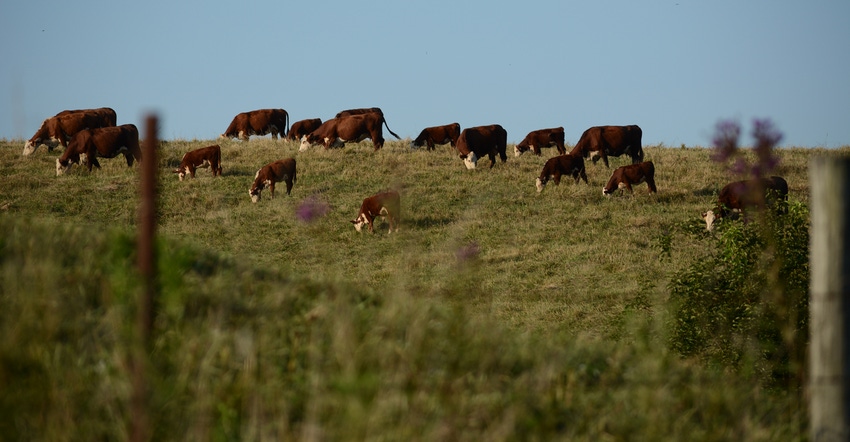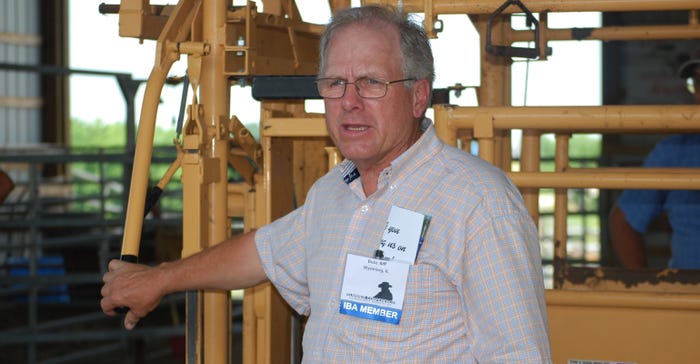
Putting down a sick cow or losing an animal is hard enough, but what if you can’t find a rendering service to dispose of the deceased animal?
Prairie Farmer reached out to the 20 licensed rendering collection service providers listed on the Illinois Department of Agriculture website. Just two out of the 20 providers will accept bovine mortalities, but only if they are younger than 30 months old. None will accept a deceased bovine over 30 months old.
You can thank bovine spongiform encephalopathy (BSE) for that. Commonly known as mad cow disease, the outbreak 10 years ago impacted bovine mortality disposal protocol.
“In 2008, the FDA strengthened their BSE rule to exclude high-risk material from all animal feed,” explains Rebecca Clark, communications manager for the Illinois Department of Agriculture. “This is where the requirements for cattle over 30 months old comes in.”
BSE is currently not a threat, and the rule is just a precaution according to Nesli Akdeniz, who specializes in livestock mortality and waste utilization at the University of Illinois.
Buzz Iliff, a veterinarian and Illinois Beef Association vice president, Wyoming, Ill., says the BSE rule is finally catching up with the countryside, and farmers are searching for rendering options.
 LIMITED OPTIONS: “Everything over 30 months, you need to bury them or bring them to a landfill,” says Buzz Iliff, IBA vice president and a veterinarian from Wyoming, Ill.
LIMITED OPTIONS: “Everything over 30 months, you need to bury them or bring them to a landfill,” says Buzz Iliff, IBA vice president and a veterinarian from Wyoming, Ill.

BSE isn’t the only roadblock. “There’s quite a bit of controversy that anything we put down with barbiturates can’t be rendered,” Iliff says, noting the drug doesn’t break down during the rendering process and creates unusable feed.
The two renderers that will accept mortalities up to 30 months old include Darling Ingredients, with locations in Mason City, Ill., and National City, Ill., and A&P Grease Trappers, West Chicago, Ill. A&P will pick up mortalities within 90 minutes of their facility, which includes DuPage, Cook and Cane counties.
Jenny Hinton, environmental affairs manager for Peoria Disposal Company and Area Disposal Service, says that although the companies have seven hauling operations licensed under the Dead Animal Disposal Act, transporting mortalities to their three permitted disposal facilities is not a standard service the company provides. PDC/Area accepts mortalities at their Indian Creek (Hopedale), Clinton or Hickory Ridge (Baylis) landfills and charges $63 to $90 per ton for disposal. The Dead Animal Disposal Act does not limit the age of landfilled mortalities. Hinton recommends contacting the landfill prior to delivery to ensure service, and adds that reduced rates may be available.
Two of the licensed providers on the list did not respond to repeated inquiries by Prairie Farmer. The remaining licensed companies collect other waste, like used cooking oil, and do not accept mortalities.
The Illinois Dead Animal Disposal Act has eight different classes under the rendering collection service license, including a Class A license for dead animals and a Class B license for scraps, bones, fat, used cooking grease and oils. The IDOA database is organized by license, not class, and lists all company types under licensed rendering collection services on their website.
So, what can farmers do if a rendering isn’t a possibility? For bovine mortalities older than 30 months, Clark says options include on-farm burial and composting. For burning, Akdeniz says mortalities should be incinerated according to EPA guidelines. If you suspect BSE, contact the IDOA or USDA Veterinary Services for sampling prior to disposal.
About the Author(s)
You May Also Like




